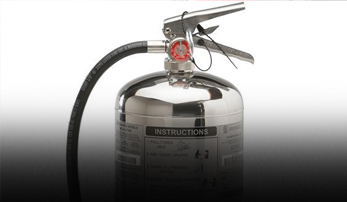Beyond the Forecast 3 States Declare Emergency Amidst Escalating Weather news & Rising River Levels.
- Beyond the Forecast: 3 States Declare Emergency Amidst Escalating Weather news & Rising River Levels.
- The Severity of the Situation in the Affected States
- Impact on Infrastructure and Transportation
- The Role of Emergency Management Agencies
- Long-Term Implications and Adaptation Strategies
- The Importance of Community Resilience
- The Role of Technology in Disaster Management
- Forecasting Future Events and Mitigation Efforts
- Financial Assistance and Recovery Programs
Beyond the Forecast: 3 States Declare Emergency Amidst Escalating Weather news & Rising River Levels.
The dissemination of information has radically transformed in the modern era, with real-time updates becoming the norm. Rapidly evolving weather patterns, unfortunately, serve as a stark reminder of the power of nature and the importance of preparedness. Recent events across several states have elevated concerns, prompting emergency declarations as river levels surge and severe weather threatens communities. Accurate and timely reporting on such crucial occurrences provides vital insights, enabling individuals and authorities to take proactive measures. The increasing frequency of these extreme weather events underscores the need for comprehensive risk assessment and mitigation strategies, and understanding the current situation requires careful attention to emerging news.
The Severity of the Situation in the Affected States
Three states are currently grappling with significant challenges stemming from unusually heavy rainfall and rapidly rising river levels. Emergency services are stretched thin, responding to multiple reports of flooding, infrastructure damage, and displacement of residents. The sheer volume of water overwhelming drainage systems and riverbanks poses a substantial threat to both urban and rural areas. The economic impact is already beginning to manifest, with disrupted supply chains and potential agricultural losses looming large.
Initial assessments indicate that the situation is likely to worsen before it improves, as additional rainfall is forecast for the coming days. Authorities are urging residents in vulnerable areas to evacuate immediately and heed all safety warnings. The logistical complexities of coordinating rescue efforts and providing essential aid are immense, requiring a collaborative approach involving federal, state, and local agencies.
The frequency of these weather-related emergencies raises critical questions about climate change and the need for long-term adaptation strategies.
| Missouri | High | 500,000+ | Widespread flooding, infrastructure damage |
| Illinois | Moderate | 300,000+ | River level surges, potential levee breaches |
| Indiana | Moderate | 200,000+ | Flash flooding, road closures |
Impact on Infrastructure and Transportation
The escalating weather events have wreaked havoc on crucial infrastructure, causing widespread disruptions to transportation networks. Numerous roads and bridges have been rendered impassable due to flooding or structural damage, hindering emergency response efforts and isolating communities. Power outages are also prevalent, impacting critical services such as hospitals and communication systems.
The economic consequences of these disruptions are substantial. Businesses have been forced to close, supply chains have been interrupted, and agricultural operations have been severely impacted. Repairing the damaged infrastructure will require significant investment and time, posing a long-term challenge for the affected states.
The Role of Emergency Management Agencies
Emergency management agencies are playing a pivotal role in coordinating response efforts and providing assistance to affected communities. These agencies are responsible for issuing warnings, organizing evacuations, establishing shelters, and distributing essential supplies. Effective communication and collaboration between federal, state, and local agencies are crucial for a successful response.
Effective preparedness prior to these events is also key. Weather monitoring systems, early warning networks, and pre-positioned resources are all vital components of a robust emergency management strategy. Investing in these capabilities can significantly reduce the impact of future disasters.
Long-Term Implications and Adaptation Strategies
The recent surge in extreme weather events underscores the urgent need for long-term adaptation strategies. Investing in infrastructure improvements, such as improved drainage systems and flood control measures, is essential for mitigating the impact of future events. Land-use planning policies should also be revised to discourage development in flood-prone areas.
Beyond infrastructure, promoting public awareness and education is crucial for fostering resilience. Communities need access to information about potential risks and how to prepare for emergencies. Encouraging individuals to take proactive steps, such as creating emergency preparedness kits and developing evacuation plans, can significantly improve their ability to cope with disasters.
The ongoing discussion regarding climate change and its influence on extreme weather patterns must also be addressed. While a definitive attribution of any single event to climate change is complex, the increasing frequency of such events is consistent with climate models and underscores the need for urgent action.
- Invest in resilient infrastructure.
- Improve early warning systems.
- Strengthen community preparedness programs.
- Promote sustainable land-use planning.
- Address the underlying causes of climate change.
The Importance of Community Resilience
Community resilience is a crucial factor in determining a region’s ability to withstand and recover from extreme weather events. Strong social networks, effective communication channels, and a sense of collective responsibility are all essential components of a resilient community.
Developing local leadership capacity and empowering residents to take ownership of their own preparedness is also critical. Volunteer organizations and community-based initiatives play a vital role in providing support and assistance to those in need. The concept of neighbors helping neighbors is key to a swift and effective recovery.
The Role of Technology in Disaster Management
Advances in technology are revolutionizing disaster management, providing new tools for monitoring, predicting, and responding to emergencies. Satellite imagery, radar systems, and data analytics are being used to track weather patterns, assess damage, and identify vulnerable populations. Social media platforms are also playing an increasingly important role in disseminating information and coordinating response efforts.
Real-time data and predictive modeling can help authorities make informed decisions, allocate resources effectively, and issue timely warnings. However, access to technology and digital literacy are not evenly distributed, emphasizing the need for capacity building and equitable access to these tools.
Forecasting Future Events and Mitigation Efforts
The scientific community is continuously working to improve the accuracy of weather forecasting models and better understand the underlying drivers of extreme weather events. Investing in research and development is crucial for enhancing our ability to predict and prepare for future disasters. Advanced modeling techniques, coupled with improved data collection, can provide more precise and reliable forecasts.
Mitigation efforts aimed at reducing greenhouse gas emissions are also essential for addressing the root causes of climate change and lessening the frequency and severity of future events. Transitioning to renewable energy sources, improving energy efficiency, and adopting sustainable land-use practices are all important steps in this direction.
Ongoing monitoring and evaluation of disaster preparedness and response efforts are also necessary to identify gaps and areas for improvement. Learning from past events is crucial for enhancing our ability to protect communities and minimize the impact of future disasters.
- Enhance weather forecasting capabilities.
- Invest in climate change mitigation strategies.
- Improve data collection and analysis.
- Conduct regular disaster preparedness drills.
- Foster collaboration between agencies and communities.
Financial Assistance and Recovery Programs
Following a major disaster, financial assistance and recovery programs are often essential for helping individuals and communities rebuild their lives. Government agencies, non-profit organizations, and private donors all play a role in providing financial aid, housing assistance, and other essential services. Navigating the complex application process and accessing these resources can be challenging, particularly for vulnerable populations.
Streamlining the assistance process and ensuring equitable access to resources are crucial for a successful recovery. Providing clear and concise information, offering multilingual support, and simplifying application procedures can help those in need receive the help they deserve.
The recent events serve as a potent illustration of the vulnerability we all share in the face of increasingly volatile weather conditions. Proactive investment in preparedness – both in terms of infrastructure and community resilience – offers the most promising pathway toward lessening the detrimental effect of such occurrences and securing a more secure future for everyone.









Recent Comments